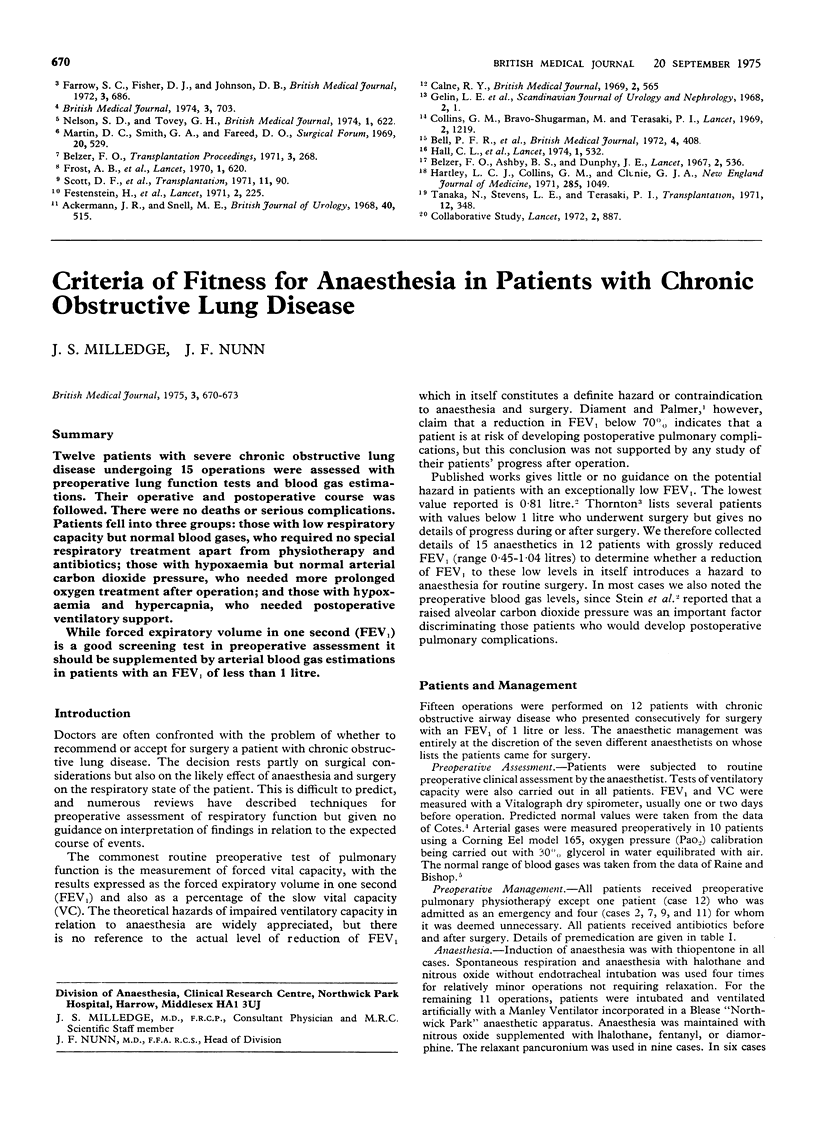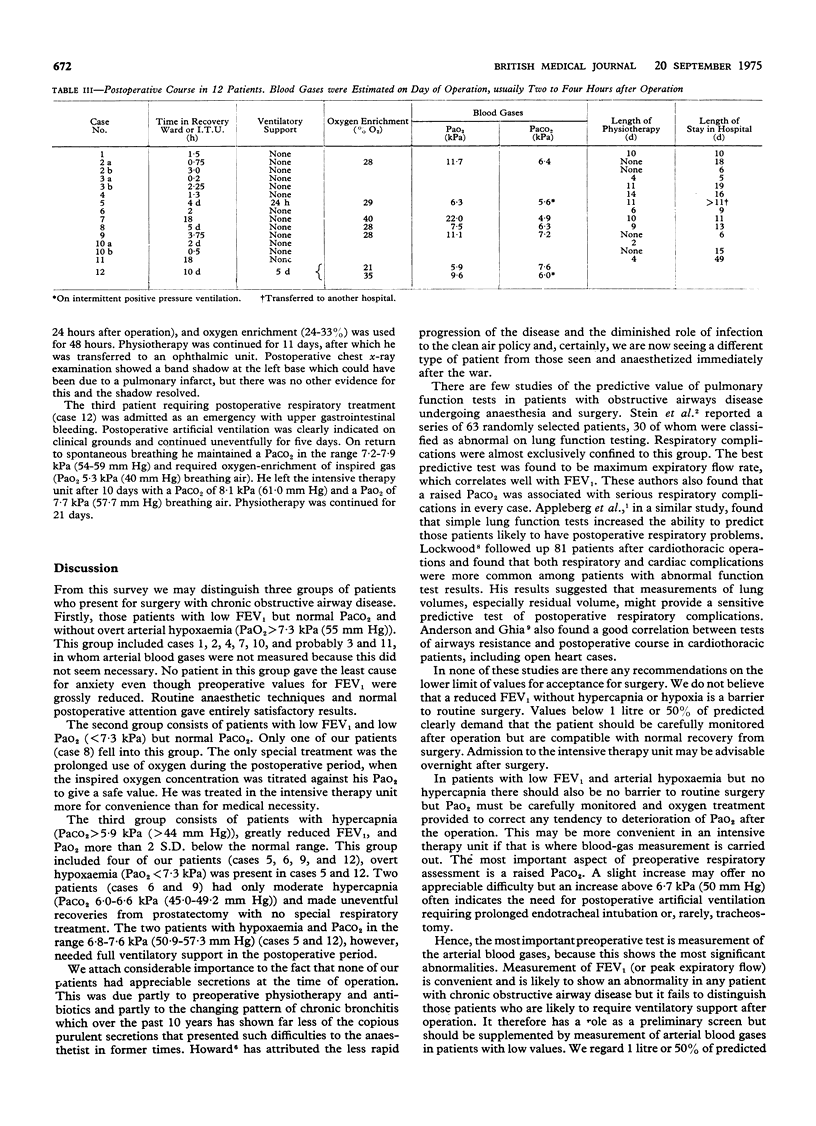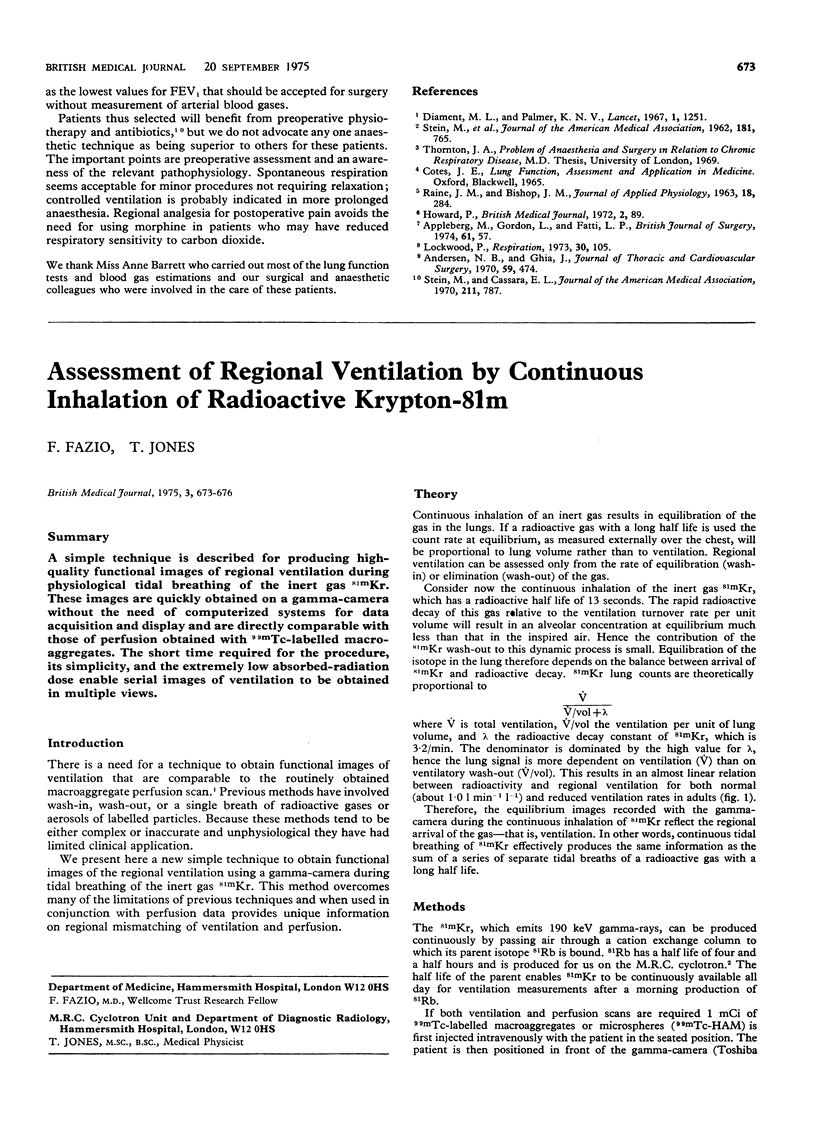Abstract
Twelve patients with severe chronic obstructive lung disease undergoing 15 operations were assessed with preoperative lung function tests and blood gas estimations. Their operative and postoperative course was followed. There were no deaths or serious complications. Patients fell into three groups: those with low respiratory capacity but normal blood gases, who required no special respiratory treatment apart from physiotherapy and antibiotics; those with hypoxaemia but normal arterial carbon dioxide pressure, who needed more prolonged oxygen treatment after operation; and those with hypoxaemia and hypercapnia, who needed postoperative ventilatory support. While forced expiratory volume in one second (FEV) is a good screening test in preoperative assessment it should be supplemented by arterial blood gas estimations in patients with an FEV of less than 1 litre.
Full text
PDF



Selected References
These references are in PubMed. This may not be the complete list of references from this article.
- Andersen N. B., Ghia J. Pulmonary function, cardiac status, and postoperative course in relation to cardiopulmonary bypass. J Thorac Cardiovasc Surg. 1970 Apr;59(4):474–483. [PubMed] [Google Scholar]
- Appleberg M., Gordon L., Fatti L. P. Preoperative pulmonary evaluation of surgical patients using the vitalograph. Br J Surg. 1974 Jan;61(1):57–59. doi: 10.1002/bjs.1800610114. [DOI] [PubMed] [Google Scholar]
- Diament M. L., Palmer K. N. Spirometry for preoperative assessment of airways resistance. Lancet. 1967 Jun 10;1(7502):1251–1253. doi: 10.1016/s0140-6736(67)92715-8. [DOI] [PubMed] [Google Scholar]
- Lockwood P. The relationship between pre-operative lung function test results and post-operative complications in carcinoma of the bronchus. Respiration. 1973;30(2):105–116. doi: 10.1159/000193026. [DOI] [PubMed] [Google Scholar]
- Stein M., Cassara E. L. Preoperative pulmonary evaluation and therapy for surgery patients. JAMA. 1970 Feb 2;211(5):787–790. [PubMed] [Google Scholar]


